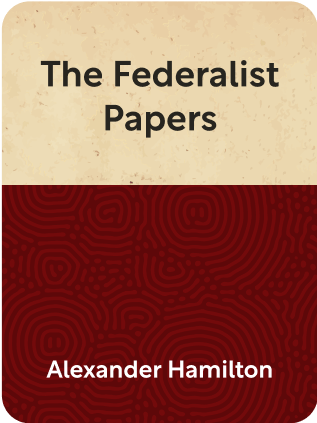

This article is an excerpt from the Shortform summary of "The Federalist Papers" by Alexander Hamilton. Shortform has the world's best summaries of books you should be reading.
Like this article? Sign up for a free trial here .
How did the Articles of Confederation power distribution affect the early United States? How did state powers under the Articles of Confederation evolve in the Constitution?
In the Articles of Confederation, power is limited for the national government. Federalist 16 discusses the shift of power to the national government under the Constitution.
Read more about the Articles of Confederation, power, and Federalist 16.
Articles of Confederation Power Distribution
A confederacy is an association of independent states or political communities. They are an inherently unstable and weak form of government. In the Articles of Confederation, power for the overarching state tends to be lacking. It doesn’t have the proper authority to perform important central functions like raising an army, administering justice, collecting revenue, or regulating coinage, because its constituent members are too powerful and can block any initiative.
The weak central government is only held together because the constituent states are also too weak to exist on their own as independent nations. This leaves the entire confederacy vulnerable to civil war and outside invasion.
This is precisely what plagued 18th-century confederacies like the Holy Roman Empire (consisting of large parts of what is now Germany). A ramshackle polity made up of competing and disunited principalities, duchies, and baronies, the Holy Roman Empire was a scene of constant warfare and strife, largely because of its flawed constitutional design.
Arguments Against Federal Power
Opponents of a strong federal government often made the argument that it would trample upon the rights of state and local governments. But Publius made the opposite case—that the states were more likely to infringe upon the federal government, not the other way around. This was because the people would naturally feel more closely connected and loyal to their state governments, owing to their physical proximity and shared history and experiences—just as an individual is more connected to her family than she is to her community at large. In any conflict between a state and the federal government, the state was likely to have the majority on its side.
Historically, the only way that confederacies have overcome this tendency to split apart is when local governments become so oppressive to the people that the latter unite with the higher central authority to overthrow them.
During the Age of Feudalism in Europe’s Middle Ages, the local aristocracy was frequently more powerful than the monarch and, therefore, had greater ability to exploit the peasantry. Successful monarchs were only able to break the backs of the nobility by tapping into this rich source of discontent and allying with the peasants.
Federalist 16: State Powers Under the Articles of Confederation
The principal weakness of the Articles was one rooted in these general weaknesses that afflict all confederacies—the central government could act upon the states of which it was composed, but not upon the actual people of those states. In the Articles of Confederation, power stayed largely with the states. The states, not the people, were the fundamental political units.
This is an important distinction. It meant that the federal government, acting through Congress, could pass legislation requiring the states to furnish money or manpower to meet some emergency. But it was left entirely to the states to actually marshall those resources from their citizens. State powers under the Articles of Confederation undermined the Union.
This effectively gave each state total discretion as to whether or not they would comply. The Articles of Confederation power dynamic was problematic. In this sense, the Articles created something more akin to a league or assembly of independent states acting together on a voluntary basis than an actual unified polity. Under the Articles, the only way a state could have been compelled to action would have been for the other states to agree to raise an army and make war on it. Thus, the loose structure of the Articles of Confederation power distribution was a recipe for civil war, chaos, and the ultimate destruction of the Union.

———End of Preview———
Like what you just read? Read the rest of the world's best summary of Alexander Hamilton's "The Federalist Papers" at Shortform .
Here's what you'll find in our full The Federalist Papers summary :
- The genius of the founding fathers in how they designed the United States Constitution
- Why it was critical for the United States to form a union rather than stay separated as colonies
- How Alexander Hamilton anticipated social issues that are still relevant today






